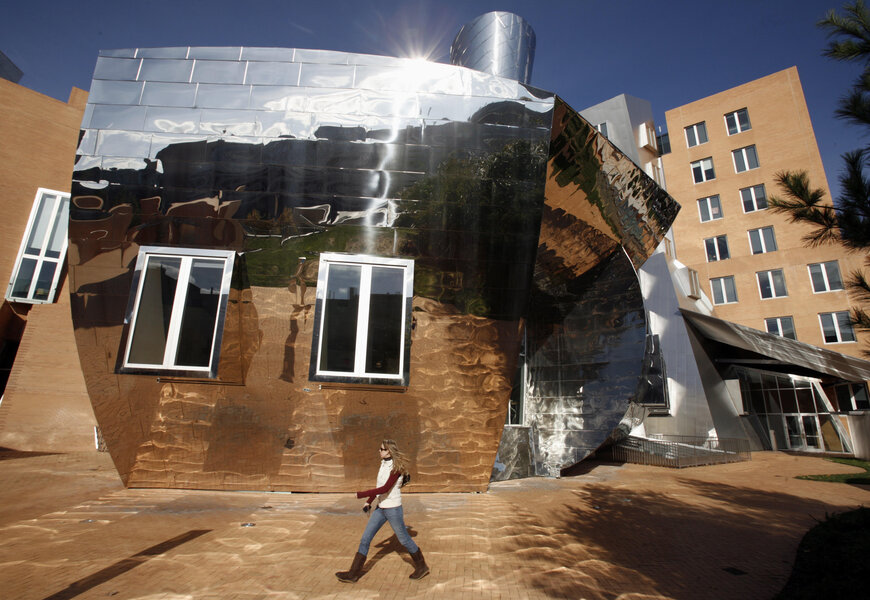Why universities and industry should collaborate on climate change
Loading...
When nations send negotiators to Paris in December for global climate talks under the UN Framework on Climate Change, they have an enormous opportunity — and imperative — to develop a strong international accord. To achieve the dramatic global reductions in greenhouse gas emissions that are necessary to avert the worst impacts of climate change, world leaders will need to put the full force of policy and dedicated resources behind their national commitments. They should also employ an approach we at the MIT Energy Initiative (MITEI), MIT's multidisciplinary energy research and education hub, believe is crucial: engagement with industry on research and commercialization of technologies vital to transforming today’s energy systems.
While global energy demand is likely to double in the first half of this century, every part of the world is already experiencing the impacts of climate change, from sea level rise and drought to economic instability and scarcity. Even if this year’s climate summit yields robust national contributions towards tackling climate change, experts agree that we will need to do more to prevent global temperatures from rising more than 2 degrees C. Each of us and the businesses, organizations, and institutions we belong to must bring our capacities and talents to bear.
When our various constituencies work together to address climate change, the potential benefits increase exponentially. For energy-intensive and energy-producing companies, partnering with universities makes sense because these businesses recognize that their futures lie in lower-carbon practices and technologies. Partnering brings many benefits to industry: access to cutting-edge research and policy expertise helps companies plan for and mitigate risks within their businesses and operations, and informs their internal R&D programs. Working with university faculty and researchers, companies collaborate and compete to be the first to develop solutions that speed energy system transformations, which benefits their businesses as well as society.
The advantages for universities partnering with industry extend far beyond the additional availability of funds for research or programs. Through these partnerships, we not only benefit from industry resources and insights into critical technology problems, we also leverage the enormous talent base in the energy and related industries. Drawing on industry knowledge of scaling energy technologies is especially important, as scaling poses a major challenge that can impede a rapid transition to the future low-carbon energy economy.
Many organizations and institutions see the merit of collaborating with industry to tackle climate change, such as Ceres, the national NGO mobilizing business leaders to build a thriving, sustainable economy. Another is the Boston Green Ribbon Commission, a Barr Foundation initiative with the City of Boston to convene representatives from each of the city’s leading economic sectors to develop shared strategies for fighting climate change (MIT is a member). In addition to helping individual businesses enact climate strategies, institution-industry coalitions can provide added value by convening businesses that are otherwise competitors to work towards a shared goal.
Making climate change a common cause also signals to policymakers and the public that industry recognizes the threats posed by a warming planet and rising seas, and is serious about contributing to solutions. For industry advocacy to be meaningful, however, companies must take concrete actions and invest in a lower-carbon energy future, as in the examples above — making their memberships in consortia count for more than lip-service on climate action.
That is why at MITEI, our industry members make contributions that directly fund necessary research into renewable and energy-efficient technologies. Industry support has enabled over a thousand MIT faculty, undergraduates, graduate students, and postdocs to work on a broad spectrum of more than 800 energy research and analysis projects. Most of these are in low- or no-carbon areas including solar, energy storage, and advanced biofuels, to name a few. Additional projects focus on increasing the efficiency of conventional energy technologies, modernizing electric distribution here in the U.S. and in the developing world, and advancing new energy modeling methods.
In October, MIT launched its Plan for Action on Climate Change, the Institute’s multifaceted response to the urgent global priorities of significantly reducing carbon emissions while sustainably meeting growing energy needs.
A central element of the plan is a redoubled commitment to engaging with industry to foster low-carbon energy research — a strategy MITEI has embodied since its founding in 2006, guided by then-Institute President Susan Hockfield and led by my former colleague professor Ernest Moniz, now U.S. Secretary of Energy. As described in the plan, MITEI is developing interdisciplinary Low-Carbon Energy Centers advance technology in key areas. The first five centers will focus on solar power; energy storage; carbon capture, use, and sequestration; advanced materials; and nuclear. These centers will be supported by industry consortia, with members ranging in size from start-ups to multinationals. Our shared objective is to put the global energy system on a path to rapid decarbonization within a generation.
The people involved in this energy research are among the vanguard who will help achieve our global low-carbon energy transition. MIT’s energy partnerships with industry have led faculty and graduates to join — or launch — clean energy companies, research laboratories, and sustainability-focused NGOs. Spin-offs since MITEI’s inception include solar company 1366 Technologies, solar potential mapping company Mapdwell, building energy efficiency company Essess, and energy storage companies Ambri, 24M, and FastCAP Systems.
MIT President Rafael Reif recognizes the importance of bringing industry stakeholders to the table. As the MIT climate plan states, “Combatting climate change will require intense collaboration across the research community, industry and government.” To achieve the kind of environmentally sustainable future we will want our grandchildren to inherit, we need everyone on board.
Robert Armstrong is the director of the MIT Energy Initiative.





